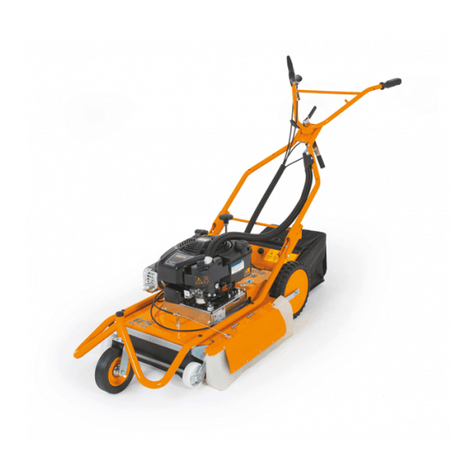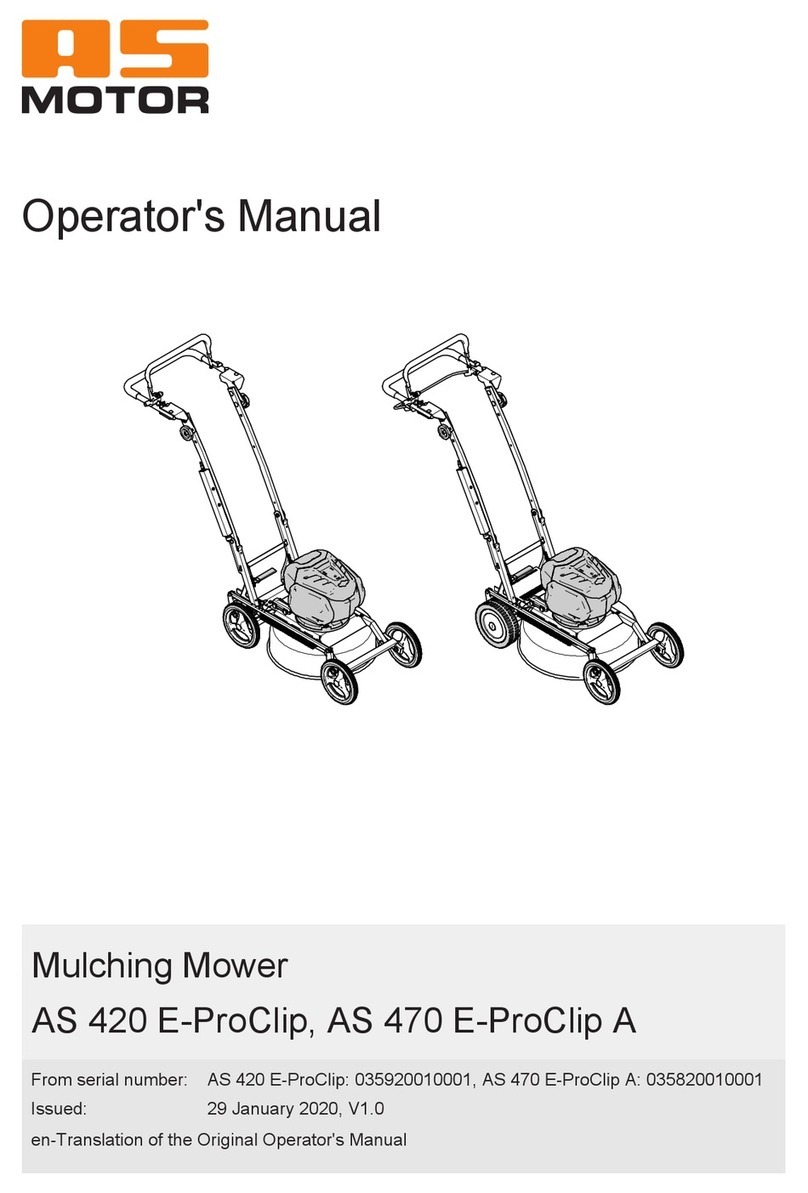
Contents
Notes on the operating manual.................................. 2
Contact ......................................................................... 2
Device data................................................................... 2
Intended use................................................................. 2
Explanation of the symbols........................................ 5
Warnings...................................................................... 5
Symbols in the instructions........................................... 5
Signs on the device...................................................... 5
Safety instructions ...................................................... 6
Get informed!................................................................ 6
User restrictions and hours of operation....................... 6
Safe handling of fuel..................................................... 6
Check the device prior to use....................................... 7
Use of attachments....................................................... 7
Danger area.................................................................. 7
Use caution during operation........................................ 8
Before you start working............................................... 8
Caution during working................................................. 9
Caution when mowing slopes....................................... 9
When work is completed.............................................. 10
Use caution during maintenance and repair................. 10
Device description....................................................... 11
Control elements ......................................................... 12
Information on how to work........................................ 13
Prior to starting............................................................ 13
Fuel............................................................................... 13
Tanking up.................................................................... 13
Checking the engine oil level........................................ 13
Starting......................................................................... 14
Starting the device........................................................ 14
Setting the maximum permissible engine speed.......... 14
Driving .......................................................................... 14
Driving.......................................................................... 14
Reverse gear................................................................ 15
Steering and turning..................................................... 15
Pushing......................................................................... 15
Switching the working tool on and off........................... 15
Switching off and parking........................................... 15
Mounting the attachments.......................................... 16
Preparing the attachment carrier for the attachment.... 16
Mounting the attachment.............................................. 16
Dismounting the attachment......................................... 16
Attachment cutter bar ................................................. 17
Intended use (cutter bar).............................................. 17
Safety instructions (cutter bar)...................................... 17
Information on mowing................................................. 17
Device description ESM cutter bar G90900102........... 18
Device description LOSI cutter bar G90900103........... 18
Setting the cutting height.............................................. 19
Attachment flail bar G90900104 ................................. 19
Intended use................................................................. 19
Signs on the device...................................................... 19
Safety instructions (attachment flail bar)...................... 20
Information on mowing................................................. 20
Device description........................................................ 20
Adjusting cutting height................................................ 20
Locking steerable front wheel....................................... 20
Attachment sweeping brush G90900105................... 21
Intended use................................................................. 21
Signs on the device...................................................... 21
Safety instructions (sweeping brush)............................ 21
Information on how to work.......................................... 21
Device description........................................................ 22
Sweeping brush side adjustment.................................. 22
Adjusting the contact pressure of the brush................. 22
Transport...................................................................... 23
Loading......................................................................... 23
Unloading the device.................................................... 24
Maintenance................................................................. 25
Maintenance and cleaning position.............................. 25
Maintenance overview.................................................. 26
Cleaning the device carrier and attachment................. 29
General inspection........................................................ 29
Maintenance device carrier......................................... 29
Hydrostatic transmission.............................................. 29
Maintaining the engine................................................. 29
Checking the engine oil level........................................ 29
Checking the spark plugs............................................. 29
Maintaining the air filter................................................ 30
Checking the drive........................................................ 30
Checking coupling for working tool............................... 30
Checking the parking brake.......................................... 30
Assembly...................................................................... 31
Maintenance ESM cutter bar....................................... 31
Cleaning the cutter bar................................................. 31
General inspection........................................................ 31
Checking the blade....................................................... 31
Servicing the cutter bar................................................. 31
Checking the blade driver............................................. 32
Adjusting the blade guide plates................................... 32
Resharpening the blades.............................................. 32
Changing the blades..................................................... 32
Checking coupling for working tool............................... 32
Checking the oil level of the blade drive....................... 32
Grease lubrication........................................................ 33
Assembly...................................................................... 33
3
Contents





























